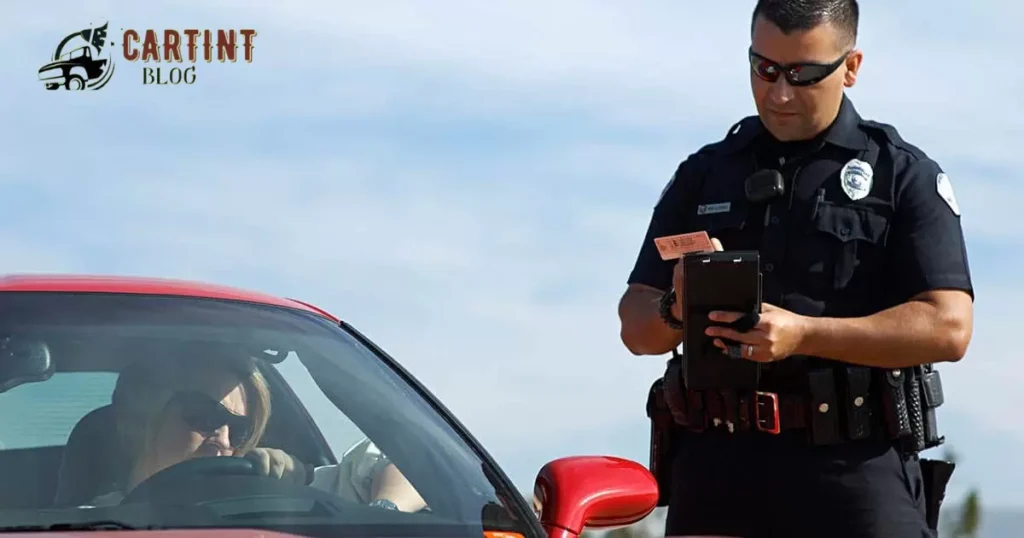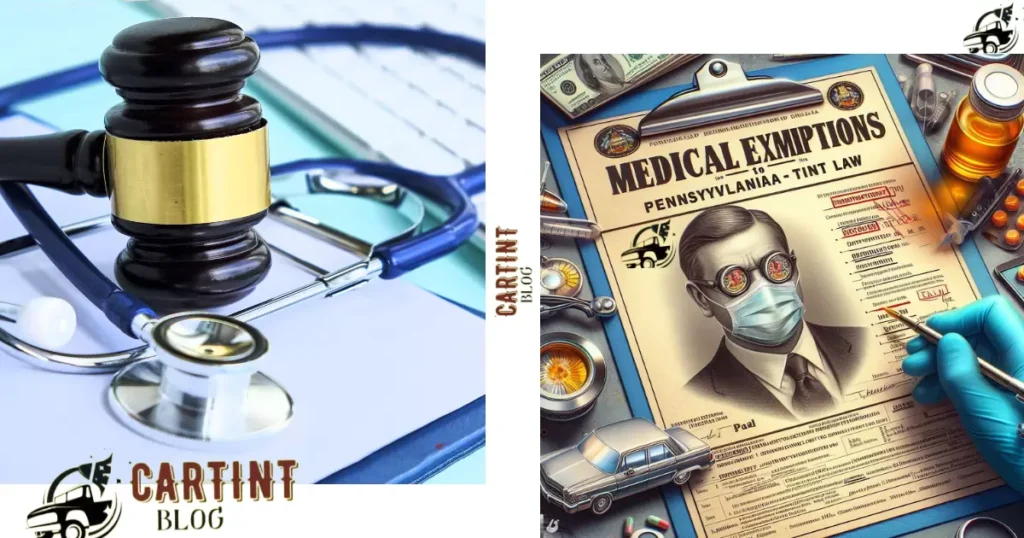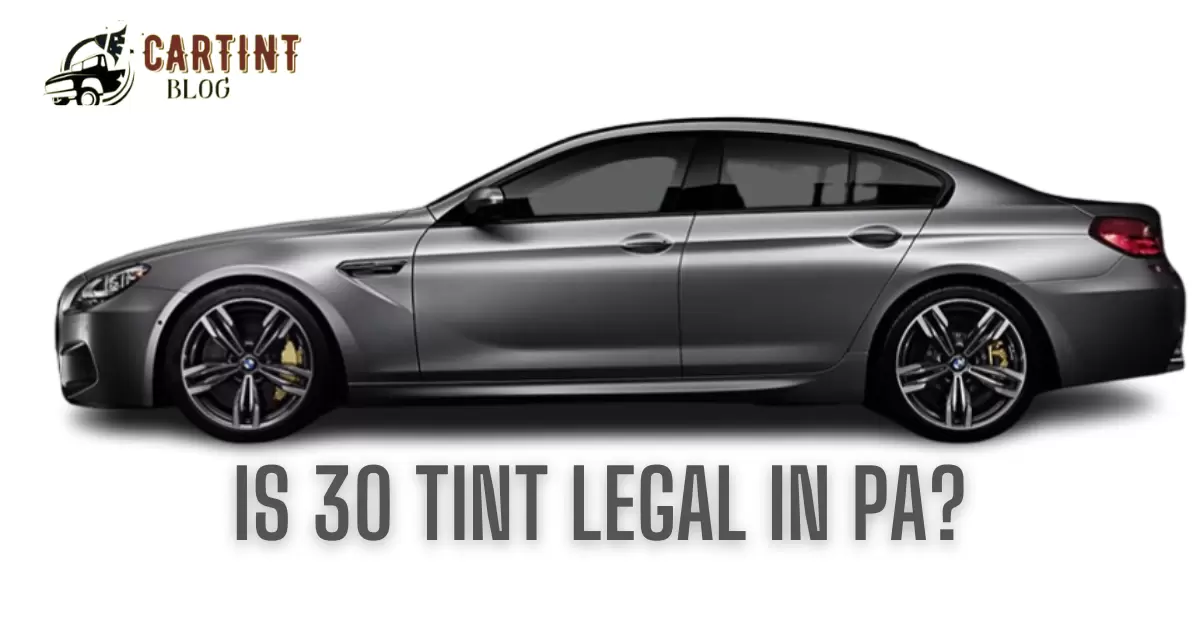In Pennsylvania, the term 30 Tint refers to window tinting with a darkness level of 30%. This specification is associated with the percentage of visible light allowed to pass through the tinted windows of a vehicle, as regulated by state laws.
Curious about window tint regulations in Pennsylvania? Is 30 Tint Legal In Pa?? is a common question among vehicle owners seeking to customize their windows. Understanding the legal limits for tint darkness is crucial to avoid potential fines and ensure compliance with state regulations.
In Pennsylvania, window tint laws are in place to regulate the darkness of tinted windows for vehicles. The allowable tint percentage, including 30 Tint, is subject to specific guidelines outlined by the state. Residents need to be aware of these regulations to maintain legal and safe window tinting on their vehicles in Pennsylvania.
The Current Pennsylvania Tint Laws in 2024
Pennsylvania Tint Laws regulate the darkness of vehicle window tints to ensure safety on the roads. Generally, 70% or more VLT is the permissible window tint in Pennsylvania. There are a few exclusions, though.
One excellent approach to prevent direct sunlight from reaching your eyes while driving is to apply any shade of black you choose to the top three inches of your windshield.
As of 2024, Pennsylvania Tint Laws mandate a minimum of 70% light transmission for front side windows, while rear side and rear windows for regular cars can have any darkness. SUVs, vans, and trucks have no restrictions on rear window tint darkness, and reflective tints are not allowed on any windows.
For Passenger Vehicles
In Pennsylvania, tinted windows for passenger vehicles are regulated by specific laws. The legal limit for tint darkness is 70% for the front side windows and 70% for the windshield. There are no restrictions for the rear side windows and the back windshield.
Windshield
Must let in over 70% of the light, with no more than 3 inches of darkness above.
Front Side Windows
They must let in more than 70% of the light.
Rear Side Windows
You can use any level of darkness.
For Multi-Purpose Vehicles
Multi-Purpose Vehicles (MPVs) in Pennsylvania must adhere to specific tint laws. According to regulations, the front side windows must allow more than 70% of light to pass through.
There are no restrictions for tint darkness on the rear side windows and the rear windshield. This ensures transparency and safety while driving, promoting compliance with state guidelines for MPV window tinting.
Window Tint Ticket in PA

If you receive a window tint ticket in Pennsylvania, it’s crucial to understand the state’s tint laws. In Pennsylvania, a window tint ticket can cost up to $110 for a single infraction.
But a judge or other court official may have the authority to impose higher fines for specific tint offenses or for persistent violations of the state’s tint legislation.
Visible Light Transmission Explained

The quantity of visible light that can flow through a solar lens or optical device is known as visible light transmission. It is also known as VLT%, or visible light transmittance. This is the proportion of a lens’s blackness inside the frame of a pair of sunglasses. The sun lens will be darker the lower the VLT.
Visible Light Transmission (VLT) refers to the amount of visible light that can pass through window tinting. In Pennsylvania, tint laws regulate the permissible VLT percentage for vehicle windows. The front side windows must allow more than 70% of light, while the rear side and rear windows can have a VLT of 70% or less.
Window Tinting in Las Vegas
Window tinting in Las Vegas adheres to strict regulations outlined in Pennsylvania Tint Laws. These laws dictate the permissible levels of darkness for tinted windows, ensuring safety and compliance with state standards.
The regulations specify that front side windows must allow at least 70% of light to pass through, while back side and rear windows can have a minimum of 30% visible light transmission. It’s essential for residents and businesses in Las Vegas to be aware of these laws to avoid potential fines and ensure road safety.
Violating tint regulations can result in penalties, making it crucial to choose window tinting services that prioritize adherence to Pennsylvania Tint Laws while providing the desired level of tinting for comfort and aesthetics.
Medical Exemptions to Pennsylvania Tint Law

Colorless UV-filtering products are permitted for use by drivers under the Pennsylvania tint legislation medical exception.
The Medical Advisory Board collaborates with the DMV to support requests for darker tinting exceptions.
A doctor or optometrist can certify a patient’s medical condition on behalf of someone requesting a medical exemption.
What Is the Darkest Legal Tint in PA?

In Pennsylvania, the proportion of light that may pass through your window glass is known as visible light transmission, or VLT. Make sure you’re looking at the right VLT for your car because it varies depending on whether you drive a van, sedan, or an SUV.
Sedans
According to Pennsylvania law, the use of tinting that allows only 15 Percent Tint Legal In Pa of light to pass through the windows does not meet the legal requirement. It’s crucial to adhere to these regulations to avoid any potential legal issues related to window tinting in the state.
SUVs and vans
More than 70% of light must pass through the front side windows. You may tint the front side, back side, and rear glass to any degree of blackness. Additionally, the windshield must let in 70% of the light, except the top three inches.
Darkest Legal Tint for SUVs and Vans in Pennsylvania
Windshield
Must let in over 70% of the light, with no more than 3 inches of darkness above.
Windows on the front side
They must let in more than 70% of the light.
Backside windows
You can use any level of darkness.
Rear window
You can use any level of darkness.
State of Pennsylvania Info
Pennsylvania, or the Commonwealth of Pennsylvania as it is formally known, is a state in the United States that is situated in the Great Lakes, Northeastern, and Mid-Atlantic regions.
The state is bordered to the southeast by Delaware, to the south by Maryland, to the southwest by West Virginia, to the west by Ohio, to the northwest by Lake Erie and Ontario, to the north by New York, and to the east by New Jersey.
Of the 50 states in the union, Pennsylvania is the 33rd largest in terms of territory, the 6th most populous, and the 9th most densely inhabited.
Capital
Harrisburg is the capital.
Population
12,964,056 people live there.
Area
46,055 square miles (119,283 km2)
Pennsylvania’s cities include Philadelphia, Pittsburgh, Harrisburg, Allentown, Lancaster, Centralia, State College, Erie, Bethlehem, Reading, King of Prussia, York, West Chester, Gettysburg, Altoona, Easton, Carlisle, New Hope, Johnstown, Doylestown, Manheim, Latrobe, Paint, Pottstown, Greensburg, Bensalem Township, Phoenixville, Norristown, Jim Thorpe, Hazleton, Chambersburg, Malvern, Upper Darby, Media, Lititz, Lansdale, Downingtown, Green Tree, Emporium, Pottsville, Conshohocken, Wayne, New Castle, Coatesville, Cranberry Township, Washington, Chester, Quakertown, Monroeville, Leon
Can you fail PA inspection for tint?
The requirements for the annual vehicle safety inspection do not include window tinting. It is not legally acceptable to use tinting on Pennsylvania’s highways even if your car passes the annual safety inspection.
References
Sourced via CRIMEWATCH® https://lancaster.crimewatchpa.com/newhollandpd/11520/content/window-tinting-regulations
FAQs
What is the darkest legal tint in PA?
The darkest legal tint for front side windows in Pennsylvania allows at least 70% of light to pass through.
What is the legal tint in PA 2023?
As of 2023, the legal tint for front side windows in Pennsylvania must permit at least 70% light transmission.
Can I have 35% tint in PA?
No, Pennsylvania regulations require front side windows to allow at least 70% of light, making 35% tint illegal.
Is 70% tint worth it?
The choice of 70% tint depends on personal preferences, but it complies with Pennsylvania law for front side windows.
What are the legal implications of a police officer looking inside a vehicle with tinted windows?
Tinted windows may prompt police scrutiny, and if found in violation of tint laws, consequences can include fines and other legal repercussions.
Conclusion
Considering Pennsylvania tint laws, it’s evident that a 30% tint level for the front side windows is not legal. The regulations clearly stipulate that these windows must allow at least 70% of light to pass through.
Straying from this guideline can lead to fines and potential safety hazards on the road.To stay on the right side of the law, it’s crucial to adhere to the specified tint limits. Following these regulations ensures not only compliance with the law but also contributes to a safer driving environment.
Understanding and abiding by these rules help maintain road safety while avoiding legal consequences associated with violating Pennsylvania tint laws.
Meta Description



